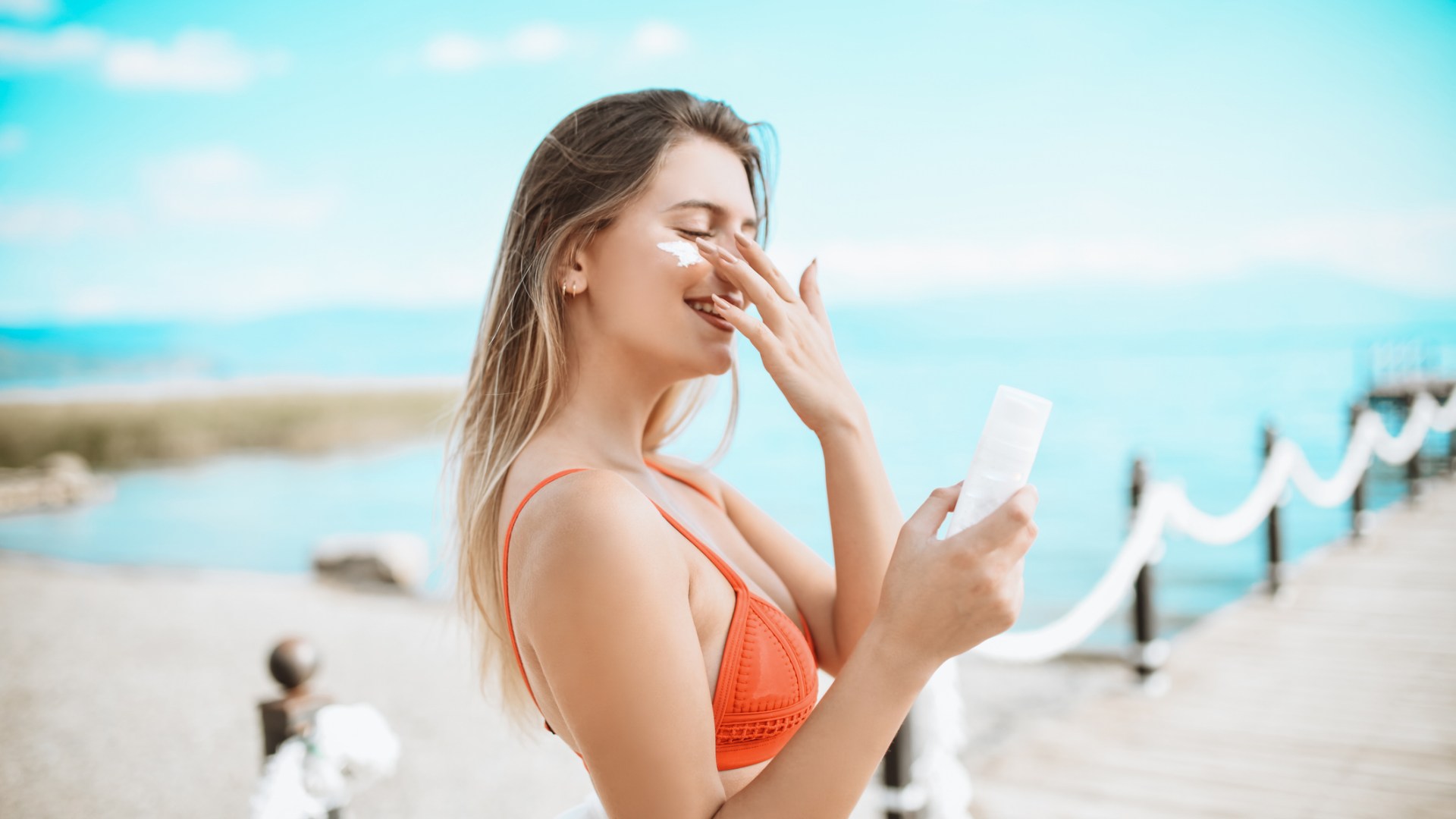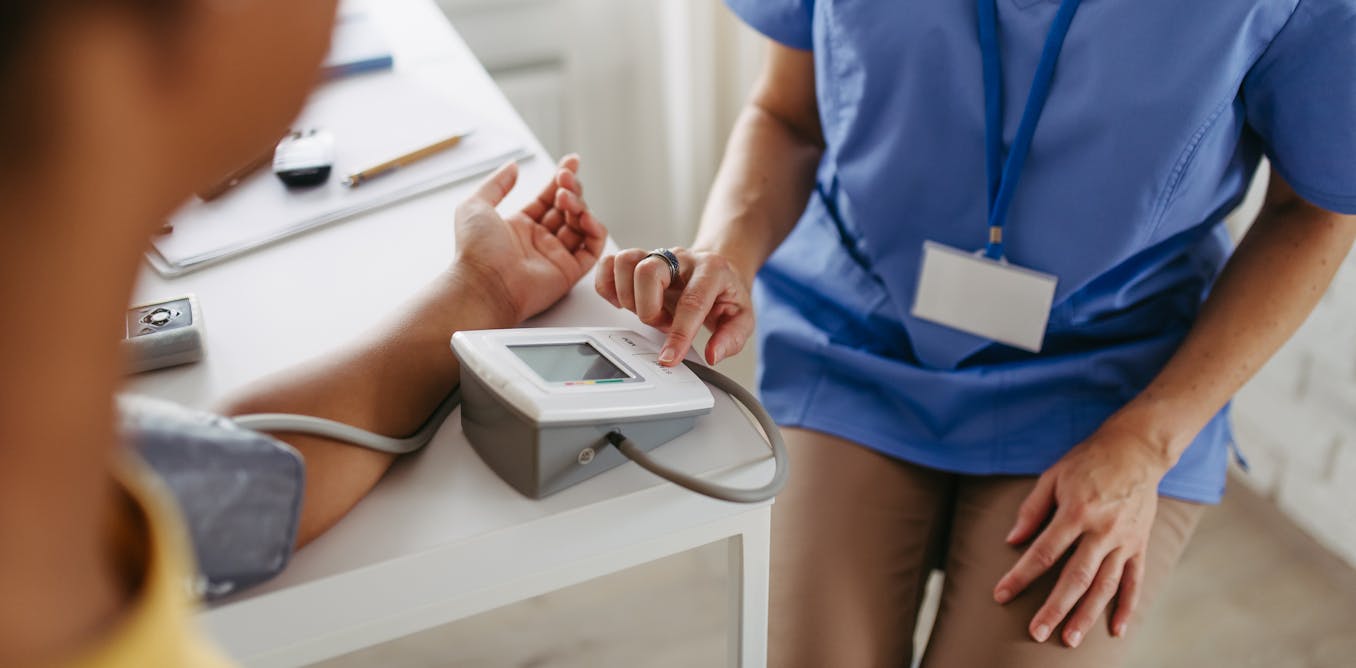WITH sunny weather, high temperatures, and people wearing less clothing comes an increased risk of skin cancer.
The best way to avoid skin cancer is to protect your skin from harmful ultraviolet (UV) radiation, i.e regularly applying sun cream.
3
But according to one skin cancer specialist, there are five areas of the body people often forget to protect.
These are more prone to skin cancer, of which there are two main types – melanoma, and non-melanoma.
Dr Paul Banwell, who runs a research unit and is a Visiting Professor of Plastic Surgery to Harvard Medical School, told Sun Health: “Keep applying SPF regularly and don’t forget areas such as the scalp which you can cover with a hat if you prefer.
“Hands and feet are often areas that are forgotten too, so ensure that these receive a high factor SPF too.
Read more sun safety tips
“People often forget to protect their lips, ears and scalp.
“Lips are a particularly vulnerable spot for sunburn, particularly as people often forget to apply SPF.
“The ears are also an area that gets missed easily, but it’s important to use SPF on your ears as they are still exposed to the UV rays.
“And ears are a common location for skin cancer. It is very important to be vigilant regarding any new lesions in front and behind the ears.”
As it’s easy to miss your ears when applying sunscreen, it’s not uncommon for skin cancer to appear in the outer year. Cancers in the inner ear are more rare.
Cancer Research UK estimates around six to 10 per cent of skin cancers develop on the outer ear.
It adds that most squamous cell carcinomas (a form of non-melanoma skin cancer) develop on areas of skin exposed to the sun or that have been burnt in the past.
The more times you get sunburned, the higher your chance of skin cancer.
People need to make sure they are protecting their kids, as melanoma, particularly, is linked with sunburn in childhood.
Dr Banwell warned: “Getting burnt doesn’t automatically mean you will get skin cancer, but getting consistently burnt means increasing your risk of skin cancer.”
Amputation risk
Dr Banwell stressed the importance of regular surveillance of the ears in particular.
He said: “Early pick up is vital as surgical treatment can otherwise result in partial or total amputation.”
While amputation of the ear is quite rare when it comes to skin cancer, it is still a possibility.
The doctor added: “A surgeon will only suggest amputation if your cancer is affecting most of your outer ear.
“Your surgeon might be able to reconstruct your ear by using living tissue or a prosthetic ear. This should be done by a specialist surgeon, however.
“What type of treatment you receive depends on where your skin cancer is placed on your ear and what stage the cancer is.”
The five areas you need to remember SPF

What to look for
Non-melanoma skin cancer is a common type of skin cancer that starts in the top layer of skin.
One of the main types is squamous cell cancer.
Dr Banwell advised: “Most squamous cell cancers appear as pink lumps that have a hard surface. You need to watch out for lumps which do not heal within four weeks and often bleed easily.
“This can also take the form in a changing mole, such as the mole growing, changing, itching or bleeding.”
Basal cell carcinoma (BCC) is the other main type of non-melanoma skin cancer, and is the most common skin cancer type (greater than 80 per cent) in the UK.
It often appears as a slightly transparent bump on the skin, or glossy black on brown or black skin.
For melanoma – a type of skin cancer often caused by too much sun exposure – there’s a simple way to remember the warning signs. “Remember the A-B-C-D-Es of melanoma,” said Dr Banwell.
- Asymmetrical: Does the mole or spot have an irregular shape with two parts that look very different?
- Border: Is the border irregular or jagged?
- Colour: Is the colour uneven?
- Diameter: Is the mole or spot larger than the size of a pea?
- Evolving: Has the mole or spot changed during the last few weeks or months?
He added: “Use an approved system for checking the back for moles, this can be done with the help of a partner or by using a phone to take pictures and monitor changes.
“If you are worried about an area of your skin, or something has changed, please seek professional advice.
“You need to be vigilant about any moles changing and check them regularly.”

3

3
How to apply sun cream
Dr Karishma Hemmady, consultant dermatologist at Stratum Clinics, says: “I recommend reapplying every two hours as a minimum, as we tend to apply it much more sparingly than is done during lab testing – so a SPF 30 will offer you only SPF 15 in most cases.”
But make sure to reapply as sun cream protection fades over the day.
Dr Hermmady says: “Exposure to water will also alter the protection, even if your product is water resistant, so if you’re swimming, perspiring and towel drying, or any other vigorous or abrasive activity, make sure you re-apply.
“Up to 85 per cent of a product can be removed by towel drying.”
Being unprotected will also increase the likelihood of suffering with sunburn which could also lead to heatstroke. This is particularly dangerous and potentially fatal in young children, the elderly and people with health conditions.
Dr Hemmady says: “Sunburn draws fluid to the skin surface and away from the rest of the body causing dehydration.
“In order to achieve the sun protection factor on the label, a fingertip-sized squirt should cover an area of skin the size of a hand.
“So, a couple of squirts should be sufficient to adequately protect the face and about one tablespoon worth needs to be applied to each body part.
“This is often a lot more than people think, so it is worth measuring this for a few applications to get a feel for how much is needed.
“Applying less will reduce the protection to a higher degree than is proportionate – for example, only applying half the required amount can actually reduce the protection by as much as two thirds.”
Can you spot the cancerous moles from the harmless ones?
IF you’ve spotted a new mole or lingering mark on your skin, don’t be too quick to dismiss it.
It’s important to know what your skin looks like normally, to helps you notice any unusual changes.
The ABCDE rule can be followed to assess the health of a mole.
If your mole falls into the following, it’s worth getting checked:
- Asymmetrical – melanomas usually have two very different halves and are an irregular shape
- Border – melanomas usually have a notched or ragged border
- Colours – melanomas will usually be a mix of two or more colours
- Diameter – most melanomas are usually larger than 6mm in diameter
- Enlargement or elevation – a mole that changes size over time is more likely to be a melanoma
Most melanomas don’t give you symptoms like pain or itching.
Meanwhile, some non-cancerous moles or abnormal patches of skin can be itchy.
So having some of these changes on their own doesn’t mean you definitely have melanoma, but you should still get it checked out.
There are two main types of skin cancer – non melanoma skin cancer and melanoma skin cancer.
Non-melanoma skin cancer includes:
- Basal cell skin cancer – this is also called basal cell carcinoma
- Squamous cell skin cancer – this is also called squamous cell carcinoma
There are a few different types of melanoma too:
- Superficial spreading melanoma
- Nodular melanoma
- Lentigo maligna melanoma
Find out more about distinguishing moles here.




